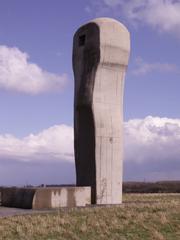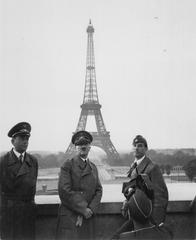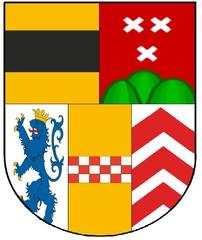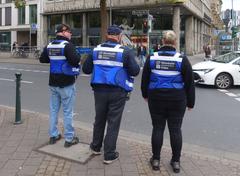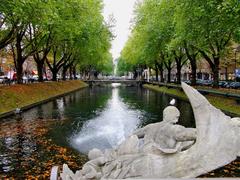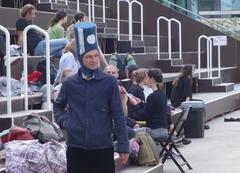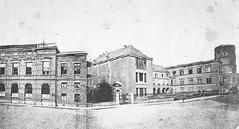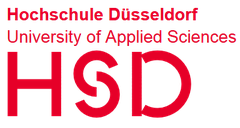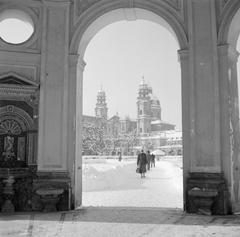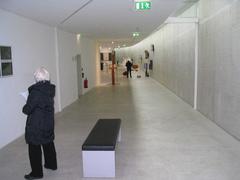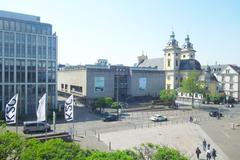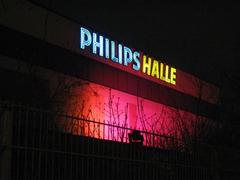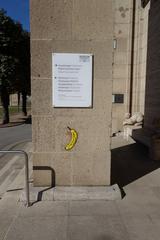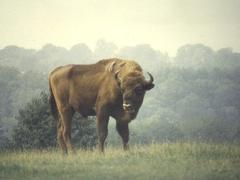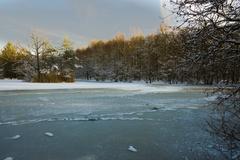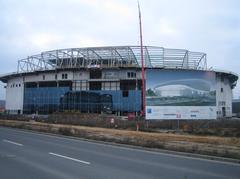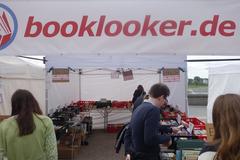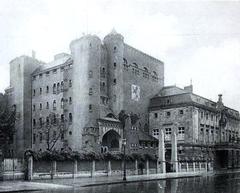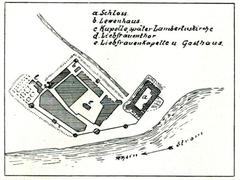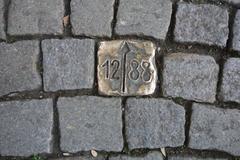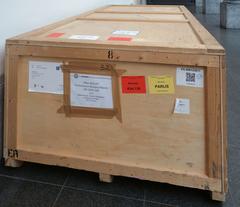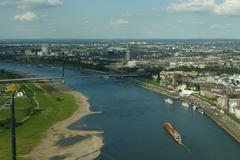
Comprehensive Guide to Visiting Raketenstation Hombroich, Düsseldorf, Germany
Date: 31/07/2024
Introduction
Raketenstation Hombroich, situated near Düsseldorf, Germany, is a unique site that seamlessly blends history, art, and nature. Originally established in the 1950s as a NATO missile base during the Cold War, the site has undergone a remarkable transformation into a cultural landmark, thanks to the vision of German art collector and philanthropist Karl-Heinrich Müller. Müller’s acquisition of the site in 1994 marked the beginning of its evolution into a haven for art and architecture, creating a harmonious coexistence between human creativity and natural beauty (source). The site’s historical significance as a former Cold War missile base, equipped with Nike-Hercules missiles, adds a layer of intrigue for visitors interested in both history and contemporary art (source). Managed by the Hombroich Foundation since 1997, Raketenstation Hombroich continues to draw artists, researchers, and visitors from around the world, offering a unique experience that transcends traditional museum visits (source).
Table of Contents
- Introduction
- History of Raketenstation Hombroich
- Visitor Information
- Cultural Transformation
- Practical Travel Tips
- FAQ
- Conclusion
- Sources
Exploring Raketenstation Hombroich
History of Raketenstation Hombroich
Origins and Early Use
Raketenstation Hombroich was established in the 1950s as a NATO missile base during the Cold War. Part of a broader network of military installations, it housed short-range ballistic missiles designed to deter threats from the Eastern Bloc (source).
Cold War Era
During the Cold War, the base played a crucial role in Western Europe’s defense strategy. Equipped with Nike-Hercules missiles capable of carrying nuclear warheads, the site was heavily guarded and operated under strict security protocols (source).
Decommissioning and Transformation
With the easing of Cold War tensions in the late 1980s and early 1990s, the site’s strategic importance diminished. The INF Treaty of 1987 led to the dismantling of many missile bases, including Raketenstation Hombroich. By 1990, the site was decommissioned and the military presence withdrawn (source).
Acquisition by Karl-Heinrich Müller
In 1994, German art collector and philanthropist Karl-Heinrich Müller acquired the site. He envisioned transforming the former military base into a cultural and artistic haven, marking a new chapter in its history (source).
Development into a Cultural Site
Under Müller’s guidance, the site underwent significant transformation. Renowned architects and artists were invited to contribute, repurposing military structures and constructing new buildings that blend with the natural landscape. Notable additions include the Siza Pavilion by Portuguese architect Álvaro Siza (source).
Establishment of the Hombroich Foundation
In 1997, the Hombroich Foundation was established to manage and develop the site. The foundation’s mission is to preserve the unique character of Raketenstation Hombroich while promoting artistic and cultural activities, including exhibitions, artist residencies, and various events (source).
Visitor Information
Tickets and Visiting Hours
Raketenstation Hombroich is open year-round. Tickets can be purchased on-site or online. Visiting hours vary by season, so it is advisable to check the official website for the most up-to-date information.
Nearby Attractions
Located near Düsseldorf, visitors can explore other historical sites and cultural landmarks in the region. Nearby attractions include the Museum Insel Hombroich and the city of Neuss, known for its Roman history.
Cultural Transformation
Architectural Significance
The architectural landscape of Raketenstation Hombroich is a testament to innovative design and creative reuse of space. Notable structures include the “One-Man House,” designed by Japanese artist Katsuhito Nishikawa and Düsseldorf art professor Oliver Kruse, which serves as a guesthouse for writers. The site also features the Tadao Ando-designed entrance wall, the Baumüller Sculpture, the Hofmann Lehmhaus, and the Fontana Pavilion. These buildings are not only functional but also serve as works of art in their own right, blending seamlessly with the natural environment (source).
Cultural Impact
Raketenstation Hombroich has had a profound cultural impact, both locally and internationally. It serves as a “künstlerisches Biotop” (artistic biotope), attracting artists from various disciplines who come to work, live, and exhibit their creations. The site has become a hub for contemporary art, hosting numerous exhibitions, workshops, and cultural events. This has not only enriched the local cultural landscape but has also positioned Raketenstation Hombroich as a significant player in the international art scene (source).
Integration with Nature
One of the most remarkable aspects of Raketenstation Hombroich is its integration with the natural environment. The site’s design philosophy, “Kunst parallel zur Natur” (art parallel to nature), emphasizes the harmonious coexistence of human creativity and natural beauty. The surrounding landscape, which includes meadows, forests, and water bodies, is meticulously maintained to enhance the aesthetic experience. This approach not only provides a serene backdrop for artistic endeavors but also promotes environmental sustainability (source).
Educational and Research Opportunities
Raketenstation Hombroich is also a center for education and research. The Field Institute Hombroich, established in 2001, is a notable example. This installation, made from repurposed sea containers, serves as an exhibition space for contemporary art and a venue for academic research. The institute collaborates with universities and research organizations, offering programs that explore the intersections of art, science, and technology. These initiatives provide valuable learning opportunities for students and researchers, further enhancing the site’s cultural significance (source).
Community Engagement
The transformation of Raketenstation Hombroich has also had a positive impact on the local community. The site hosts various public events, including art exhibitions, performances, and educational workshops, which are open to the public. These events foster community engagement and provide a platform for local artists to showcase their work. Additionally, the site’s emphasis on sustainable practices and environmental stewardship serves as a model for community-driven conservation efforts (source).
Economic Contributions
The cultural and artistic activities at Raketenstation Hombroich have also contributed to the local economy. The influx of visitors, artists, and researchers generates revenue for local businesses, including hotels, restaurants, and shops. Moreover, the site’s reputation as a cultural landmark attracts tourists from around the world, further boosting the local tourism industry. This economic impact underscores the importance of investing in cultural and artistic initiatives as a means of fostering economic development (source).
Future Prospects
Looking ahead, Raketenstation Hombroich continues to evolve as a dynamic cultural and artistic hub. Ongoing projects and future plans aim to expand the site’s facilities and programs, ensuring its continued relevance and impact. The Stiftung Insel Hombroich remains committed to preserving the site’s unique character while exploring new opportunities for artistic and cultural expression. This forward-thinking approach ensures that Raketenstation Hombroich will remain a vital and inspiring destination for years to come (source).
Practical Travel Tips
Opening Hours and Accessibility
Raketenstation Hombroich is open year-round, but visiting hours may vary depending on the season and specific events. It is advisable to check the official website for the most up-to-date information.
Admission Fees
Tickets can be purchased at the entrance or online. Prices may vary depending on the type of visit (guided tours, special exhibitions, etc.). Discounts are often available for students, seniors, and groups.
Getting There
Raketenstation Hombroich is located near Holzheim on the territory of the city of Neuss. It is easily accessible by car and public transportation from Düsseldorf. Free parking spaces are available at both Museum Insel Hombroich and Raketenstation Hombroich.
Accommodation
For those wishing to extend their visit, the “Kloster” guesthouse at the Hombroich rocket station offers a unique place to spend the night. Rooms can be booked as single or double rooms, with prices starting at €95.00 per room per night. Requests for accommodation are processed Monday to Friday from 10 a.m. to 5 p.m.
Guided Tours
Individual tours can be booked during a visit, with an artist guiding you through the museum and explaining the backgrounds of exhibits. This offers a more in-depth understanding of the art and architecture on display.
Art and Exhibitions
The collection housed at Museum Insel Hombroich includes oriental art, archaeological artifacts, and works by renowned artists such as Jean Fautrier, Lovis Corinth, Alexander Calder, Hans Arp, Henri Matisse, Yves Klein, and Gotthard Graubner. The museum also has a significant collection of pieces by Kurt Schwitters.
The pavilions designed by the sculptor Erwin Heerich are lit purely by daylight, which bathes the exhibits in a different light depending on the time of day or year.
Special Architectural Features
The Raketenstation Hombroich features buildings designed by internationally renowned architects and artists. Notable structures include the art and exhibition house of the Langen Foundation, designed by Tadao Ando, completed in 2004. The site also includes the Skulpturenhalle, designed by artist Thomas Schütte, which serves as both his foundation and an exhibition hall for contemporary sculpture.
Cultural and Natural Environment
The Raketenstation Hombroich is part of a larger cultural and natural environment that includes the Kirkeby-Feld and the Museum Insel Hombroich. This area combines art, architecture, and nature on over 62 acres (25 ha) of meadowland. The ethos of the island museum is to let visitors find their own way around rather than overloading them with information, promoting leisurely discovery and unforgettable experiences where art meets nature.
Additional Tips
- Weather Considerations: Since the pavilions are lit by natural daylight, the experience can vary significantly with the weather. It is advisable to check the weather forecast and plan your visit accordingly.
- Photography: While photography is generally allowed, it is always best to check specific guidelines at the entrance.
- Food and Drink: There are limited options for food and drink within the museum grounds, so consider bringing your own refreshments or planning a meal at nearby restaurants.
- Accessibility: Note that Museum Insel Hombroich is not fully accessible, so visitors with mobility issues should plan accordingly.
FAQ
Q: What are the visiting hours for Raketenstation Hombroich? A: Raketenstation Hombroich is open year-round, but visiting hours may vary. Check the official website for current hours.
Q: How much are tickets to Raketenstation Hombroich? A: Ticket prices vary based on the type of visit and can be purchased online or at the entrance. Discounts are available for students, seniors, and groups.
Q: Are there guided tours available? A: Yes, guided tours can be booked in advance through the official website.
Q: Are there any special events at Raketenstation Hombroich? A: The Hombroich Foundation organizes various cultural events throughout the year. Check the official website for upcoming events.
Q: Is Raketenstation Hombroich accessible for people with disabilities? A: The site aims to be accessible to all visitors. For specific accessibility information, please consult the official website.
Conclusion
Raketenstation Hombroich stands as a testament to the transformative power of art and culture. From its origins as a Cold War missile base to its current status as a cultural and artistic landmark, the site encapsulates a journey of renewal and creativity. The architectural innovations and the seamless integration with nature make it a must-visit destination for art enthusiasts and history buffs alike. The Hombroich Foundation’s continuous efforts to preserve the site’s unique character while promoting artistic and cultural activities ensure that Raketenstation Hombroich remains a vibrant and inspiring place. Whether you’re exploring the diverse art collections, attending cultural events, or simply enjoying the serene landscape, Raketenstation Hombroich offers an enriching experience that highlights the harmonious blend of history, art, and nature (source). As it continues to evolve and expand, the site will undoubtedly maintain its significance as a key cultural landmark, contributing to both the local community and the broader artistic landscape (source).
